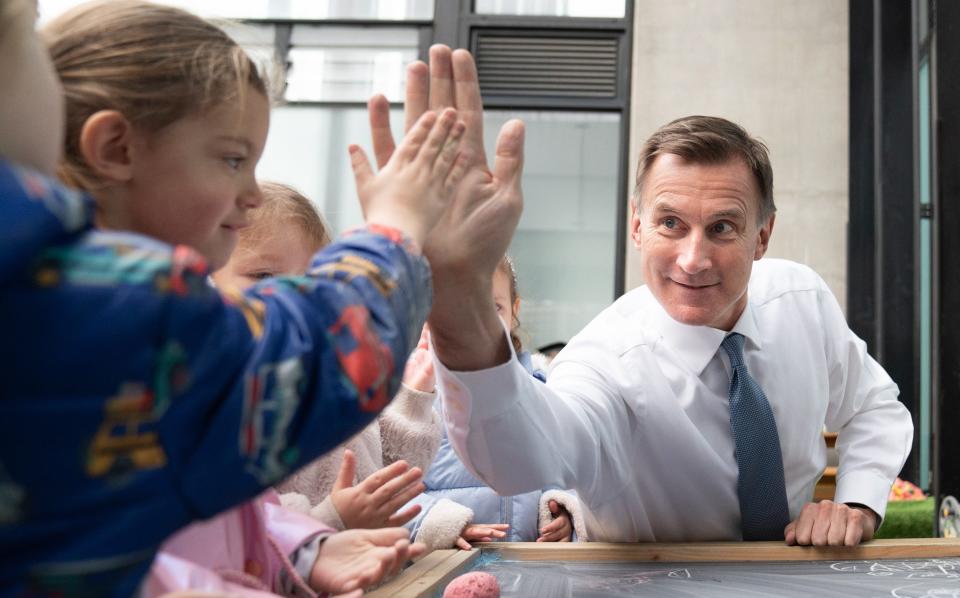55,000 working parents to be stuck in Hunt’s childcare tax trap

Fiscal drag will pull 55,000 working parents into Jeremy Hunt’s childcare tax trap over the next five years, analysis by the Centre for Economics and Business Research (CEBR) shows.
The number of parents who will find it harder to go back to work or will be incentivised to keep their salaries low will swell by 71pc, in a process known as fiscal drag.
Jeremy Hunt, the Chancellor, used his Spring Budget to extend 30 hours of free childcare to all working families with toddlers over nine months old. However, this support is removed when one parent earns over £100,000 – also the threshold when they start to lose their personal tax-free allowance.
The combined cliff edge of support means that a parent with two small children will be worse off if they are earning £134,500 than if they were earning £99,000, according to the Institute for Fiscal Studies.
There are currently 78,000 parents with children under four who have salaries of £100,000 or more and are therefore vulnerable to this tax trap. Because this threshold is frozen, and will not change to reflect wage growth, this number will swell to 133,000 by 2027-28, according to the CEBR.
Although not all of the existing 78,000 will be affected because some will be particularly high earners, almost all of the 55,000 who will cross the threshold for the first time will be immediately hit by the cliff edge in support.
This means that they will see a material drop in their disposable incomes, despite the fact that their salaries have gone up.
Matthew Lesh, of the Institute for Economic Affairs, said: “If the underlying goal with this childcare policy is to ensure parents, particularly mothers, get back into or stay in the workforce, there is a huge disincentive factor here that could undermine the whole enterprise.
“It will discourage people from working or from working hard, going for promotions and building up their skills over time. It could slow people’s career progression because they are fearful about falling over this threshold. The Government seems to be pretty much doing everything they can to sting the lower end of top income earners.”
Mary-Ann Stephenson, director of the Women’s Budget Group, warned that the cliff edge poses a particular risk to women who may be unable to return to work because they have a high-earning partner.
She said: “It shouldn’t be this way, but often within households, the cost of childcare is set against a woman’s salary to decide whether it is worthwhile for them to return to work.”
If one person in a couple has a salary that has crossed the threshold, it may not make financial sense for the second parent to work, because they would have to pay for childcare to do so.
Ms Stephenson added: “The partners of high-earning men could end up trapped and unable to return to work because of this.”
Women who are economically dependent on high earning partners will be particularly vulnerable if the relationship breaks down, because it is difficult for people to return to the labour market after they have left, she added.

 Yahoo Finance
Yahoo Finance 